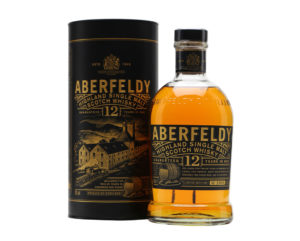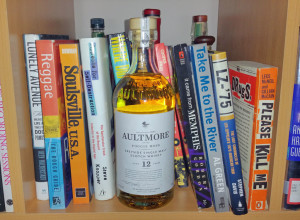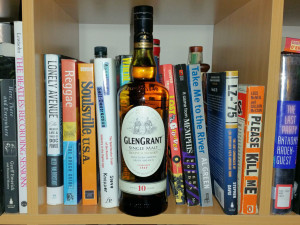Seven Entry-Level Single Malts To Try
By Richard Thomas

(Credit: Dewars)
One of the problems bedeviling Scotch is how daunting the wide range of single malts are to newcomers. While not all of the 120 active distilleries in Scotland produce single malt (or single grain) expressions, enough do that a whisky store could stock several dozen single malt brand names without even touching the creations of independent bottlers.
Other issues further intimidate the newcomer to Scotch Whisky. It has a reputation for being expensive, and a well-deserved one at that, because even some of the best-known entry level expressions are quite pricey. Glenfiddich and Glenlivet 12 might be priced quite reasonably, but Lagavulin 16 Year Old runs about $100 a bottle. Furthermore, the wide pallet of flavors in the category can make a blind choice of whisky very hit or miss.
These seven single malts will steer you in the right direction, past Glenfiddich and Glenlivet, around the pricey stuff, and to a place where you can find a good one that is just right for you.
Aberfeldy 12 Year Old ($40/£35)
The key malt contributor to Dewar’s, Aberfeldy is noted for it’s clean, richly honeyed and fruity flavor profile. The 12 Year Old is a classic, and at a price point that makes it one of the natural choices for anyone looking to get started with the Highland Region or move on from starter single malts like Glenfiddich or Glenlivet.
Auchentoshan 12 Year Old ($40/£35)
This is one of those expressions that is definitely an entry-level, which is to say that it is the lowest rung on a given product ladder, but it is most definitely not a starter whisky. Auchentoshan is such an oddball—it’s often called Irish Scotch for it’s use of triple distillation—it shouldn’t be used to start anyone on Scotch.

(Credit: Kurt Maitland)
That said, it’s still some yummy whisky. Quite elegant for a younger single malt, Auchentoshan 12 is known for its notes of vanilla and almonds.
Aultmore 12 Year Old ($50/£45)
Aultmore is another contributor to Dewar’s, and this particular expression was created quite recently, in 2014 for Dewar’s “Last Great Malts.” This one is definitely a step up for an entry-level malt, as it is noted for the light and delicate character of its fruity profile.
Cragganmore 12 Year Old ($58/£37)
The Speyside representative in Diageo’s famed Classic Malts series, it’s a rich whisky that is sometimes overlooked, this because it’s stablemates are items like Talisker 10 and Lagavulin 16. Cragganmore is a richly endowed malt, with spicy and floral notes laid over a sherried foundation. When you consider how good Cragganmore 12 is (or what other Diageo Classic Malts go for), it’s also something of a bargain.
Deanston 12 ($50/£40)
Deanston improved on their 12 year old in recent years by relaunching it as a not-chill filtered malt and raising the alcohol content to 46.3% ABV. The result was a richer, fuller bodied whisky that lives up to the distillery’s potential. The flavor profile here balances a number of notes with some subtlety, while losing none of its heft: cereals, oak, citrus zest, nuts and a touch of salt.

(Credit: Kurt Maitland)
Glen Grant 10 Year Old ($42/£32)
What Glen Grant managed to do in creating this 10 year old was capture what many newbies think of when they think of a single malt Scotch Whisky. It smacks of toffee and apples, plus notes of herbs, vanilla and a puff of smoke.
Ledaig 10 Year Old ($58/£40)
This Islands whisky is one of those single malts with a brand name that is not that of the distillery; Ledaig comes from Tobermory, on the Isle of Mull. Those looking for an affordable alternative to the much more famous Islay whiskies should give this a serious look, because it’s as smoky and salty as anything remotely comparable.



